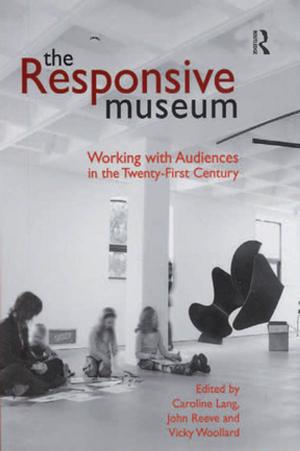Sexuality and the Devil
Symbols of Love, Power and Fear in Male Psychology
Nonfiction, Health & Well Being, Psychology, Psychoanalysis, Mental Health| Author: | Edward J. Tejirian | ISBN: | 9781317211075 |
| Publisher: | Taylor and Francis | Publication: | June 10, 2016 |
| Imprint: | Routledge | Language: | English |
| Author: | Edward J. Tejirian |
| ISBN: | 9781317211075 |
| Publisher: | Taylor and Francis |
| Publication: | June 10, 2016 |
| Imprint: | Routledge |
| Language: | English |
At the time of publication our understanding of sexuality relied heavily on biology, and also on morality, as was particularly evident when homosexuality and bisexuality were discussed. In this title, originally published in 1990, the author presents a compelling case for viewing the sexual dimension of life through an understanding of its symbols. The potent figure of the devil serves as his avenue of approach.
In the first part of the book, the author presents a detailed case history of a young man who began psychoanalytic therapy with him because of a terrifying conviction that he could be possessed by the devil. In the course of therapy it emerged that the devil had entered into his consciousness as a vehicle to express a complex of homosexual wishes and fears that were deeply troubling to a man whose life history had been entirely heterosexual. The author argues that the assumptions about male psychology that came to pervade psychoanalytic theory after Freud’s death could not account for the nature of this young man’s conflicts or for the outcome of the analysis.
In the second part of the book, the author cites historical and anthropological data to demonstrate that the depth and breadth of male psychology extend beyond the limits of what was considered normal by the neoconservative theorists who revised Freud’s theories to exclude his ideas about bisexuality. Rejecting the reduction of sexuality to biology, the author asserts that sexuality can be properly regarded as symbolic, in the same way that meaningful works of art and rituals are symbolic. The power of sexual images and actions comes from their ability to combine important meaning with intensely felt emotion. Finally, the author examines the way in which culture affects sexuality through its control of consciousness and its influence on what kinds of sexual symbols may be utilized and what kinds of meanings they may express.
At the time of publication our understanding of sexuality relied heavily on biology, and also on morality, as was particularly evident when homosexuality and bisexuality were discussed. In this title, originally published in 1990, the author presents a compelling case for viewing the sexual dimension of life through an understanding of its symbols. The potent figure of the devil serves as his avenue of approach.
In the first part of the book, the author presents a detailed case history of a young man who began psychoanalytic therapy with him because of a terrifying conviction that he could be possessed by the devil. In the course of therapy it emerged that the devil had entered into his consciousness as a vehicle to express a complex of homosexual wishes and fears that were deeply troubling to a man whose life history had been entirely heterosexual. The author argues that the assumptions about male psychology that came to pervade psychoanalytic theory after Freud’s death could not account for the nature of this young man’s conflicts or for the outcome of the analysis.
In the second part of the book, the author cites historical and anthropological data to demonstrate that the depth and breadth of male psychology extend beyond the limits of what was considered normal by the neoconservative theorists who revised Freud’s theories to exclude his ideas about bisexuality. Rejecting the reduction of sexuality to biology, the author asserts that sexuality can be properly regarded as symbolic, in the same way that meaningful works of art and rituals are symbolic. The power of sexual images and actions comes from their ability to combine important meaning with intensely felt emotion. Finally, the author examines the way in which culture affects sexuality through its control of consciousness and its influence on what kinds of sexual symbols may be utilized and what kinds of meanings they may express.















